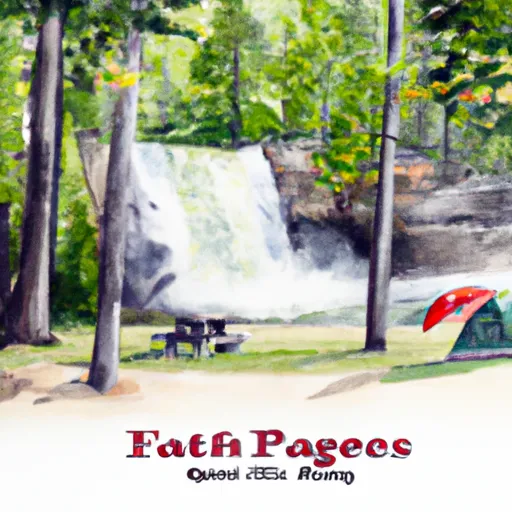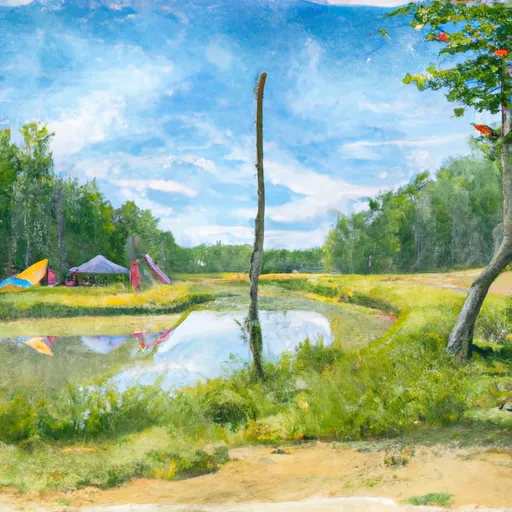Summary
With its stunning waterfalls, scenic trails, and rich history, it is a destination worth exploring.
One of the primary reasons to visit Tahquamenon Falls State Park is the majestic beauty of its waterfalls. The park is home to two notable falls: the Upper Falls and the Lower Falls. The Upper Falls, standing at around 50 feet tall and 200 feet wide, is one of the largest waterfalls east of the Mississippi River. The amber-colored water, caused by tannins leached from nearby cedar swamps, adds to the unique charm of the falls. The Lower Falls, consisting of a series of smaller cascades, provides a tranquil setting for relaxation and swimming during the summer months.
Apart from the captivating waterfalls, Tahquamenon Falls State Park offers an extensive network of hiking trails. The most popular trail is the Tahquamenon Falls River Trail, which spans approximately 4 miles along the Tahquamenon River, affording breathtaking views of the falls and surrounding wilderness. The park is also home to diverse wildlife, including black bears, moose, and numerous bird species, making it a haven for nature enthusiasts and birdwatchers.
Interesting facts about the park include its portrayal in Longfellow's famous poem "The Song of Hiawatha," which describes the "River of the Laughing Waters." Additionally, the park's waterfalls are some of the largest east of the Mississippi River and have attracted visitors for centuries with their awe-inspiring beauty.
The best time to visit Tahquamenon Falls State Park largely depends on personal preferences. During the summer months (June to August), the park offers pleasant weather, ideal for hiking, swimming, and camping. Fall (September to October) brings vibrant foliage colors, making it a popular time for nature photography and leaf-peeping. Winter (December to February) transforms the park into a winter wonderland, with frozen waterfalls and opportunities for snowshoeing and cross-country skiing. Spring (March to May) offers a quieter atmosphere, with the potential to witness the park's reawakening flora and fauna.
It is important to verify the information provided here across multiple independent sources to ensure accuracy, as details may vary or change over time.
Weather Forecast
Park & Land Designation Reference
Large protected natural areas managed by the federal government to preserve significant landscapes, ecosystems, and cultural resources; recreation is allowed but conservation is the priority.
State Park
Public natural or recreational areas managed by a state government, typically smaller than national parks and focused on regional natural features, recreation, and education.
Local Park
Community-level parks managed by cities or counties, emphasizing recreation, playgrounds, sports, and green space close to populated areas.
Wilderness Area
The highest level of land protection in the U.S.; designated areas where nature is left essentially untouched, with no roads, structures, or motorized access permitted.
National Recreation Area
Areas set aside primarily for outdoor recreation (boating, hiking, fishing), often around reservoirs, rivers, or scenic landscapes; may allow more development.
National Conservation Area (BLM)
BLM-managed areas with special ecological, cultural, or scientific value; more protection than typical BLM land but less strict than Wilderness Areas.
State Forest
State-managed forests focused on habitat, watershed, recreation, and sustainable timber harvest.
National Forest
Federally managed lands focused on multiple use—recreation, wildlife habitat, watershed protection, and resource extraction (like timber)—unlike the stricter protections of national parks.
Wilderness
A protected area set aside to conserve specific resources—such as wildlife, habitats, or scientific features—with regulations varying widely depending on the managing agency and purpose.
Bureau of Land Management (BLM) Land
Vast federal lands managed for mixed use—recreation, grazing, mining, conservation—with fewer restrictions than national parks or forests.
Related References

 Tahquamenon Falls 1 State Park
Tahquamenon Falls 1 State Park
 Tahquamenon Falls State Park Rivermouth Modern
Tahquamenon Falls State Park Rivermouth Modern
 Naomikong Pond Campsite
Naomikong Pond Campsite
 Old Stove
Old Stove
 Lower Falls Campground
Lower Falls Campground
 Tahquamenon Falls 2 State Park
Tahquamenon Falls 2 State Park